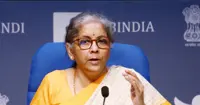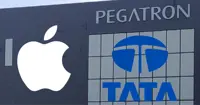AT&T chief Randall Stephenson halts production of new fibre network
15 Nov 2014
The Federal Communications Commission (FCC) yesterday asked AT&T to define its roll out new fibre network plans, and whether delivering fibre to all its customers would prove unprofitable.
The missive from the communications regulator follows AT&T CEO Randall Stephenson's decision on Wednesday to halt production of his company's new fibre network, a day after president Barack Obama's move to reclassify internet access as a public utility - a step towards net neutrality, or unbiased handling of all internet traffic by internet service providers.
This could enable the governments a say in how internet service providers could price their offerings.
AT&T and other ISPs have argued the additional regulations would hurt innovation and capital investment.
As a result, AT&T does not want to create a network when it does not know ''under what rules those investments will be governed.''
Commentators say if AT&T did not have the unregulated ability to charge what it wanted, and set its system speeds, it did not want to provide a new service to its customers.
The FCC has also asked AT&T for every document relating to its decision to limit its fibre roll out to the 2 million customers it promised as part of its plan to acquire DirecTV for $48.5 billion.
AT&T had previously planned to deploy fiber-optic lines capable of achieving speeds of 1 gigabit per second to 100 cities next year. But following President Obama's move on net neutrality, AT&T now plans to limit the deployment to 2 million additional homes that were committed as part of the DirecTV deal.
In an open letter to AT&T senior VP Robert Quinn, Jamillia Ferris, a former Justice Department anti-trust lawyer who joined the FCC to review the AT&T/DirecTV merger, has called for the following information:
- Data as regards the company's current plans for fibre deployment, specifically;
- the current number of households to which fibre was deployed and the breakdown by technology (ie, FTTP [fiber-to-the-premises] or FTTN [fiber-to-the-node]) and geographic area of deployment;
- the total number of households to which the company planned to deploy fiber prior to the company's decision to limit deployment to the 2 million households. It has also called for the breakdown by technology and geographic area of deployment; and
- the total number of households to which the company currently planned to deploy fibre, including the 2 million households, and the breakdown by technology and geographic area of deployment;
In effect, the commission wants AT&T to explain why it thought it would lose money if it expanded its fibre broadband network.































